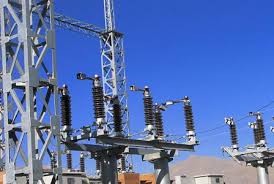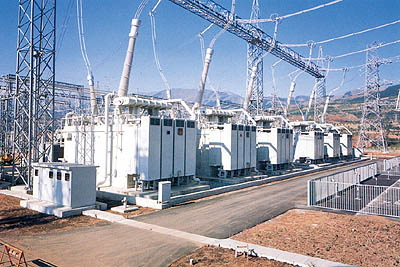صنعت انرژی در ایران- سه ماهه چهارم 2015
BMI Industry View
BMI View: Iran's power sector development received a boost in July 2015 following the signing of the Joint Comprehensive Plan of Action on the country's nuclear programme between the PG + 1, comprised of the five permanent members of the UN Security Council and Germany, and Iran. If implemented successfully, the deal will open up Iran's considerable market of 79.5mn people to foreign investment and provide a boon to the Iranian economy by removing sanctions.

Following the signing of the deal, the Iranian government signified its intention to open up various elements of its economy to foreign private sector investment. In terms of the power sector, Iran is particularly attractive to foreign investors. Historically, government subsidies to the power sector have kept electricity prices artificially low, meaning access rates are near 100%. In addition to this considerable market, many of Iran's neighbours, most notably Pakistan and Turkey, suffer from considerable electricity deficits. In the wake of the recent nuclear deal, Iran has been looking to enhance cooperation on energy issues with its neighbours, negotiating interconnection deals with the governments of Pakistan and Armenia.
The government has its own investment programme for the sector, including ambitious plans to add around 1GW of new capacity each year, plus a further and perhaps unrealistic target of increasing renewable generation capacity by 5GW by 2020. BMI's research suggests that the majority of this new capacity will come from natural gas, rather than utilising other generation technologies. Aside from new capacity being constructed, the government also plans to convert much of its simple cycle technology to combined cycle, which will result in a considerable increase in efficiency.
The lifting of economic sanctions on Iran will provide a considerable fillip to these plans. The government's plans to boost generation capacity would require a considerable capital injection of at least USD4.4bn. Such investment was not feasible when the government was under international sanctions; however, following the signing of the nuclear deal, the government should have additional capital to spend on new generation projects.
The government also plans to dramatically reduce the subsidies it pays to the power sector, which keep electricity prices artificially low. In 2014, it reduced subsidies by 25%, then again in early 2015 by a further 25%. It is likely to continue with this policy if it can. Under international sanctions, this proved difficult because given constraints elsewhere in the economy, the raising of electricity prices - a necessary condition when lowering subsidies - were unpopular. If the economy does better once sanctions are removed, raising prices could prove easier. Higher electricity prices are vital if the government wants to attract foreign private investment in its power sector.
Sanctions will not be lifted until the International Energy Agency verifies that the Iranian government is sticking to its side of the Comprehensive Plan of Action. International Energy Agency officers are to be granted regular access to Iran's nuclear facilities. However, it is unlikely to be able to verify Iran's compliance until year end at the earliest.
The Iranian government has long planned for nuclear capacity to make up a significant part of its power matrix. Currently it accounts for about 915MW, but plans to develop new capacity had been obstructed during negotiations on the country's nuclear programme. In theory, Iran could push ahead with plans to generate a great deal more electricity from nuclear than it currently does. The government wants to develop a further two reactors, equivalent to about 2GW at its Bushehr facility, and signed several agreements with the Russian government to achieve this. The Comprehensive Plan of Action allows Iran to enrich Uranium to 3.67%, enough for power generation, but insufficient to develop a nuclear weapon. However, BMI's research on the issue does not point to the country successfully developing new nuclear capacity between 2016-2024.
Key Trends And Developments
■ Following the signing of the Joint Comprehensive Plan of Action on Iran's nuclear programme, the Iranian government announced plans to open its economy for the first time to foreign private investment.
It will take some time for the US Congress to approve the agreement, and for the International Energy Agency to verify that Iran is honouring its side of the bargain. However, the country's power sector could prove particularly lucrative for private companies looking to invest.

■ The signing of the Joint Comprehensive Plan of Action has also boosted Iranian plans to export power to its electricity hungry neighbours. In August, the Export Development Bank of Iran agreed to fund USD91m a third power line to Armenia, raising capacity to 1GW, and a Pakistani delegation visited Tehran to negotiate a power purchase agreement for a 1GW interconnection project. This is a trend BMI expects to continue. In the aftermath of the nuclear deal, Iranian ambassador to Pakistan Ali Raza announced his government planned to boost exports to Pakistan to 3GW in the next few years.
■ BMI estimates Iran's total power generation to be 255.24TWh per annum, an increase of 1.55% on 2014's 251.35TWh. During the period 2016-2024, the country's total power generation is expected to rise by an average of 2.73% per year, to 325.3TWh. This new capacity will be driven mainly by development of new gas fired power stations, but also through converting simple cycle power plants to combined cycle technology.
■ Iran's 2015 real GDP is estimated by BMI to have grown by 1.4%, slightly less than 2014's 1.7%.
However, both these figures represent a substantial improvement on 2013's contraction of 1.9%, and 2012's 6.6% contraction. According to BMI's research, Iranian economic growth will increase gradually between 2016 and 2024 at an average y-o-y rate of 2.5%.
Iran Power Report Q4 2015
■ Iran's population is expected to grow from 79.5mn in 2015 to 87.3mn in 2024, representing an average yo- y increase of just over 1%. Power consumption will see considerable gains between 2016 and 2024, increasing from 209.76TWh in 2015, to 276.43TWh in 2024. This is an average y-o-y increase of 3.11%.

